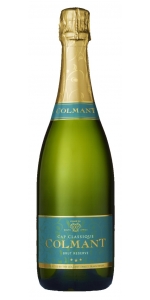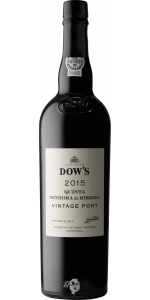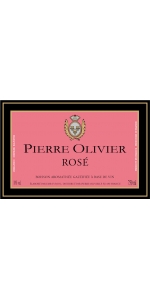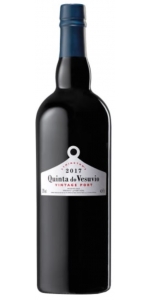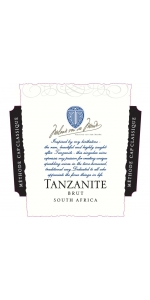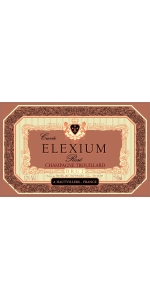Products meeting the search criteria
Boeira Tawny 20 Year Port is made from 40% Touriga Nacional, 30% Touriga Francesa and 30% Tinta Roriz.
A Good Complexity of Natural Flavors of Cassis, Blackberries and Caramel.
Fermentation in steel tank and stopped by adding spirit and aged in oak barrels for 20 years. Wine was slightly filtered before bottling.
Review:
The NV 20 Year Port is based on Touriga Nacional, Touriga Franca, Tinta Roriz, Tinta Barroca, and Tinto Cão and was aged 20 years in French oak casks. It's more complex and nuanced, with beautiful white raisin, white chocolate, ripe cherries, caramelized fig, and smoky tobacco nuances. Beautifully balanced and medium to full-bodied, it has a layered mouthfeel, a ripe tannic structure, and one heck of a great finish.
-Jeb Dunnuck 94 Points
Boeira White Diamond Port is made from Malvasia Fin, Viosinho, Gouveio, and Côdega de Larinho.
Clear amber color, on the nose aromas of citrus, tangerine peel, peaches and honey. In the mouth it is full but elegant, well integrated and persistent finish
Boeira White Diamond Port is the perfect companion for a number of foods including appetizers, lean fish, salads, pasta or desert like apple pie or crème brulée.
Review:
The NV White Diamond Port is the estate's 10-year Tawny based on Málvasia Fina, Viosinho, Gouveio, and Côdega de Larinho. Caramelized orange, toffee, fig, and spicy white chocolate notes all shine on the nose, and this beauty hits the palate with medium to full-bodied richness and a round layered, incredibly seamless mouthfeel. It's all about its seamless, decadent, sweetly fruited, yet balanced style.
-Jeb Dunnuck 94 Points
Dark amber color. Notes of dried fruit and honey balanced with rich aromas of dried fruit and torrefaction. In the mouth, subtle flavors of crystallized fruit (cherry, dates and raisins), nuts and coffee. Elegant finish.
RS: 133g/Liter
TA: 3.3g/Liter
Pairings: Digestive: Cheeses and conventual sweets (portuguese pastries).
It has a brownish red color.
Intense and complex, aged for many years in French oak. It has an elegant cigar leaf aroma. Dense and round in the mouth with dried fruit, honey and notes of crystallized fruit. A velvety and persistent finish.
RS: 114g/Liter
TA: 3.7g/Liter
Pairings: Digestive: Dried fruits, caramel sweets and conventual sweets (portuguese pastries).
It has a brownish red color. Intense and complex, aged for many years in French oak. It has an elegant cigar leaf aroma. Dense and round in the mouth with dried fruit, honey and notes of crystallized fruit. A velvety and persistent finish.
RS: 114g/Liter
TA: 3.7g/Liter
No irrigation, Harvest by hand, Port wine traditional method: (Fermentation, with skin maceration, takes place a a controlled temperature and is interrupted by the addition of grape spirits).
Aged in 550 Liters French Oak barrels with an average age of 40 years.
Slightly filtered before bottling.
Pairings: Digestive: Dried fruits, caramel sweets and conventual sweets (portugueuse pastries)
Boeira Tawny 50 Year Port is produced from Touriga Nacional, Touriga Franca, Tinta Roriz, Tinta Barroca and Tinto Cao.
Brownish color with strong coppery reflections. Toasted almonds and dried fruit stand out on the nose, with a delicate sweetness. Intense flavors on the plate, but a refinement and elegance that reflects its level of ageing. A very long evolving finish.
Boeira 50 Years Old Port is excellent as a digestive.
pH : 3.57TA : 9.48 g/L
RS : 152g/L
Then, it is aged for 50 years in 550 liter French oak barrels.
Traditional Porto winemaking with skin contact maceration and short alcoholic fermentation in stainless steel tanks followed by fortification.
Romariz Fine Ruby Port is aged in oak for three years. Fruit and pepper character, well balanced, and ample body
Boeira Douro Red is made from 35% Touriga Nacional, 35% Tinta Roriz and 30% Touriga Franca.
Deep ruby color with purple hints. Aromas of red and black fruits, toasty notes and dark chocolate. Smooth on the palate with good structure and excellent mouthfeel. Fresh, with well integrated tannins bringing elegance and a gastronomic profile to the wine. Very well balanced. Boeira Douro DOC Red from the Douro Valley is the result of a careful blend of different varieties from the Douro. After fermentation the wine was left in contact with its lees until bottling in order to develop complexity and richness.
Pair with pork roast stuffed with prunes and apricots, grilled meats, marinated leg of lamb, chicken curry, pasta with beef or pork ragout, vegetable timbale with roasted tomatoes and grilled almonds. A very “friendly” food wine.
The 2017 was a very different year to 2016 in terms of the viticultural conditions and it was interesting to watch the progression of the wine and scrutinize its quality as it developed over its first two winters. Whereas 2016 had a very mild winter and exceptionally hot summer, this was compensated by abundant winter and spring rainfall. Conversely, 2017 was warm and drythroughout, although summer temperatures were closer to average, whichproved to be a very significant factor allowing for complete, balancedripening.
It is rare to see such tremendous depth and intensity in color as this winedisplays. The freshness of the floral aromas is very attractive with adominance of rockrose, a flower that grows wild around the hills of Senhorada Ribeira. On the palate, it is exceptionally full-bodied, rich andpowerful with black fruit coming to the fore. Gorgeous, ripe fruit isbalanced by the fine tannin structure. On the finish, it is typically Dow,austere and somewhat drier than many other ports. The intense fruit flavors linger long on the palate.
Dow’s Vintage Ports are only produced in years of exceptional quality and represent only a very small part of the total company’s production in that year. On average only two or three times every ten years are the weather conditions sufficiently good to allow for the making of Dow’s Vintage Port.
Throughout the 19th and 20th centuries, Dow’s Vintage Ports have been landmark wines in virtually every great year, consistently setting the standards amongst all Port houses. Vintage Ports such as the remarkable Dow 1896, the 1927, 1945, 1955, 1963, 1966, 1970, 1980 and the Dow 1994 are all legends in the history of this great wine. These Ports are still magnificent today, even when 50 or over 100 years old. Few wines can claim this quality and this pedigree.
Dow's Vintage Ports are drawn from the companies' finest vineyards; Quinta do Bomfim and Quinta de Senhora da Ribeira. Each property contributes to the Dow’s unique and distinctive style. When young, Dow’s Vintage Ports are purple-black, austere, complex and intensely concentrated, full-bodied and balanced with very fine peppery tannins.
Over the centuries, the Dow winemakers have evolved a style that suits the house’s key vineyards; fermentations are a little longer, resulting in a drier Port Wine that has become the hallmark of Dow’s. Abundant fruit flavours with hints of ripe blackberries, give elegance and poise to Dow’s. The nose is deep and powerful with strong overtones of violets when young, these mature into fine cinnamon and rose-tea aromas with age. The very high percentage of Touriga Franca and Touriga Nacional planted on the vineyards result in the powerful structure and aging potential of Dow’s Vintage Ports
Dow’s Ports avoid an over-rich style and requires a very high degree of skill in wine making and great experience in selecting the finest wines of each year and each vineyard. These wines are aged in seasoned oak casks for some 18 months and are bottled without any filtration or fining whatsoever.
Dow Vintage Ports can be enjoyed when vibrant and young or they can be allowed to age for many years in bottle into a soft and delicate wine of velvet-like elegance.
In the 1920’s, the celebrated Oxford Professor George Saintsbury underlined Dow’s outstanding reputation when he wrote in his famous ‘Notes on a Cellarbook’ (first published in 1920), “There is no shipper’s wine that I have found better than the best of Dow’s 1878 and 1890 especially.”
James Suckling, one of today’s leading authorities on Vintage Port was equally impressed by another legendary wine - the Dow’s 1896 - “The ancient {1896} Port still had an amazing ruby colour with a garnet edge, and it smelled of raisins, black pepper and berries. It was full-bodied, with masses of fruit intertwined with layers of velvety tannins. It was superb.” In 1998, when this wine was 102 years old, he awarded this Port an exceptional 98 points.
Review:
Based on fruit from the predominantly south-facing Quinta do Bomfim in the Cima Corgo and Quinta Senhora da Ribeira in the Douro Superior, with Touriga Nacional and Touriga Franca making up 80% of the blend. This is opaque and closed in but powerfully ripe with underlying pure berry fruit. It's seemingly quite introverted compared to some of its peers at this stage, but it's still full, rich and opulent on the palate. It also shows the latent power of the vintage, made as it is in a slightly drier style (3.4 Baumé), with lovely minty fruit and full, ripe sinewy tannins all the way through the finish. Long and lithe, and very fine.
-Decanter 97 Points
A dense, thickly textured version, dripping with warm salted licorice, tar and açaí paste notes, while plum and blueberry pâte de fruit, chai spice and chocolate elements fill in behind. Lots of brambly grip flows underneath. Shows a very sappy feel on the finish. Best from 2035 through 2055. 5,250 cases made, 1,092 cases imported
-Wine Spectator 96 Points
This is a dry while also floral wine, perfumed and enticing with its juicy acidity. At the same time, the structure is very present, showing power and dark black fruits. The balance is coming together with the rich fruits and tannins melding into one. Drink from 2028. ROGER VOSS
-Wine Enthusiast 96 Points
Deep dark ruby garnet, opaque core, violet reflections, delicate brightening of the edges. Black wildberry jam underlaid with delicate herbs and spices, tobacco nuances, hints of blueberry jam and elderberries, schisty notes. Powerful, full-bodied, sweetness present, carrying tannins, dark nougat in the finish, very good length, an imperious style, built for a long life.
Falstaff 98 Points
Boeira Douro White 40% Malvasia Fina, 30% Rabigato, 20% Gouveio and 10% Fernão Pires.
Good volume in mouth revealing its fruity character, now enhanced with a citrus component. Slight mineral touch that gives it personality. It is a complex and deep wine with a persistent finish.
Good accompaniment to fish dishes, salads, and can also be drunk as appetizers. Should be consumed at a temperature between 8º and 10ºC.
Flowering in the Duoro occurred in the last 10 days of May. The weather conditions provided for a perfect flowering season. The Romariz Vintage Port 2003 yielded wines of great color and supple tannins, with a vintage stamp being evident in most wines. Production: 8,000 cases. "Another bright and fruity young Vintage Port with plum, grape and blackberry aromas with just a hint of stems. Serious nose here. Full-bodied, with soft, round tannins and a long, caressing finish. A beauty."
- J.S., Wine Spectator, 89-91 pts
"Bright dark ruby. Deep, perfumed aromas of cassis, licorice, violet and minerals. Lush and high-toned in the mouth but with very good vinosity and spine. Lovely fruit-driven flavors of black cherry, blackberry and dark chocolate. Little sign of the roasted side of 2003. Not hugely concentrated but suave, supple, minerally and sweet. Finishes with ripe tannins and very good spicy persistence. A very good showing. Accessible already but balanced for medium-term aging."
- Stephen Tanzer's International Wine Cellar, 89 pts
"Opaque ruby. A complex, beautifully structured wine from Europe’s hot summer of 2003. Lively spicy, toasted aromas and a ripe and generous palate with layers of rich, dense flavors of dark fruit, chocolate, tobacco, spice box and a hint of marmalade. Finishes dry and long with still firm tannins. A delicious Port that should be paired with Roquefort and other blue cheeses."
- International Wine Review (Succulent Sweet Wines for the Holidays: The Best of 2018), 92 pts
Colmant Brut Chardonnay is made from 100 percent Chardonnay (Franschhoek and Robertson).
15% of the base wine has been barrel fermented.
Ageing: This wine spends a minimum of 45 months on the lees at a consistent temperature of 14C before degorgement.
Tasting: Delicate light gold color with a lime-green hue. The nose is fresh, lemony and floral with notes of green apple, followed by yeasty and biscuity aromas brought by the lengthy maturation on the lees. Very fine bead of bubbles with a persistent mousse. Opulent on the palate, this wine shows a harmonious balance between fresh zestiness, mineral complexity and a warm breadth of leesy creaminess. It promises to develop great texture over time.
Drinking tips: Ideal with pan fried scallops or line fish "au beurre blanc", it is also the oyster's best friend and will enhance the flavors of parmesan, asparagus, artichokes, parma ham,…
Reviews:
"The core of this wine, which subsequently spent 52 months on lees, comes from the 2015 vintage and shows the ageing potential for which Colmant bubblies are famous. Savoury, fresh and intense, with plenty of colour, added complexity from reserve material, notes of aniseed and citrus peel and a fine, refreshing finish. 2021-25"
- Tim Atkin (South Africa 2020 Report), 93 pts
There are many alternatives to Champagne, and South Africa is no exception with some fine “Method Cap Classique.” Jean-Philippe Colmant hired winemaker Nicolas Follet to create a small range of impressive sparkling wines; they eschew malolactic fermentation and practice extended lees aging.- NM"
- eRobertParker.com (Issue #196, August 2011), 92 pts
A blanc de blanc with the heart of Chardonnay, the NV Brut Chardonnay has focused citrus tones on the nose with notes of yellow pear and green apple. The oak is subtle here, with a solid beam of acidity through the mid-palate. The wine is thoughtful and focused, and the finish leaves my mouth watering; there is serious acidity here, and they are doing it right. Colmant is the little guy doing some really great things— quietly focused wines, with serious aging potential. Keep this small producer on your radar. I expect nothing but great things in years to come from JP Colmant and his new winemaker, Paul Gerber, formerly of Le Lude. - Anthony Mueller"
- Robert Parker's Wine Advocate (Issue #245, October 2019), 91+ pts
"Our favorite Colmant sparkler by far, this blanc de blancs would easily pass for good quality Champagne. It’s pale straw with a fine bead with biscuit and lemon aromas. Very flavorful and complex on a rich palate with a persistent finish, it’s 100% Chardonnay, 15% barrel fermented, and spends 4 years on the lees. RS 5 g/L"
- I-WineReview 92 pts
IMPORTER SALE!
Blend: Colmant Brut Reserve NV is a blend of Pinot Noir 52%, Chardonnay 48% (Franschhoek, Robertson, Elgin, Somerset-West and Stellenbosch). 10% of the blend is made of reserve wine from the previous vintage and 12% of the base wine is barrel fermented.
Ageing: 28 months minimum on the lees at steady 13°C temperature.
Tasting: A subtle pale gold color with a very clean and elegant nose. The aroma has a gentle spicy toastiness with a lemon / yeasty perfume followed by more mature fruit. Plenty of freshness on the palate, with a good acidity which perfectly balances the yeasty depth, bready flavors and ample structure. Long smooth finish. Will develop nicely over the years.
Drinking tips: Divine as an aperitif and loyal as a party buddy, it also goes perfectly with oysters, sushis or any delicate seafood.
Reviews:
"The Brut Reserve (disgorged April 2018) was 10% fermented in French oak barrel and includes 20% reserve vintages. It spent 30 months on the lees. The well-defined, focused nose features bright citrus lemon and hints of baked bread. The palate is well balanced with a taut, crisp, citric entry. This is vivacious, very pretty and graced with lovely apricot hints on the finish. A superb MCC from Colmant. - Neal Martin"
- Vinous (August 28th 2018), 91 pts
"Fresh with leesy notes, a fine mousse and delicate palate of minerals and green citrus zest, this is a first class New World sparkler. It’s rich enough to enjoy on its own or with white meats. It’s a 50/50 blend of Pinot Noir and Chardonnay aged on the lees for 30 months and 25% reserve wines from earlier vintages."
-International Wine Review, 91 pts
"Disgorged February 2011, the Non-vintage Brut Reserve is a blend of 52% Pinot Noir and 48% Chardonnay based on the 2008 vintages blended with reserve wines from 2007 and 2006 (25% of the blend), aged for 30 months on the lees. It has a very fine pettillance in the glass. The nose is very well defined with crushed stone, oyster shell and the subtle perfume of fine lees coming through with aeration. The palate is very crisp and lively on the entry with vibrant acidity, a citrus thread from start to finish, and though it is not a powerful Cap Classique, it is wonderfully poised with great persistence on the fresh lime and Granny Smith-tinged finish.
There are many alternatives to Champagne, and South Africa is no exception with some fine “Method Cap Classique.” Jean-Philippe Colmant hired winemaker Nicolas Follet to create a small range of impressive sparkling wines; they eschew malolactic fermentation and practice extended lees aging."
- eRobertParker.com , 92 pts
Our Hunt for Colmant:
It was day 6 in South Africa and we find ourselves outside of beautiful Cape Town, in the country near the Riebeek Kasteel area in Swartland. Let's talk a little about my accommodations before I tell you about this amazing bubbly. We arrive at the one and only hotel in Riebeek to find out that there were not enough rooms open for all.
We reached out to our contact at Riebeek cellars, who we will refer to as "Point Break" from now on. For those of you that have not seen the movie Point Break, this guy looked and sounded like a blonde Keanu Reeves with a Dutch accent. Anyway, Point Break tells me that they have secured a small bed and breakfast that we could use for the overflow. Sounded nice...so I opted for it.
Upon arrival, the home was beautiful on the outside with a catchy French name, "Shades of Provence". After Point Break fiddled with the skeleton key and lock for a good 35 minutes in the rain, we finally get to see the inside of our new home. The door opened straight into the kitchen where the first thing I noticed was the mouse sh*t all over the place. It was winter there and the mice were trying to stay warm, I'm sure. Little did they know this damn place had no heat.
Besides myself and my fiancee Sylvia, there were 3 other people and a total of four rooms. At this point I knew I better drag both our suitcases up those steps and get to the best room before everyone else. At stroke-causing speed, I skipped up the steps nearly knocking Point Break on his back and went through the rooms. I settled for a nice corner room with the least amount of dirt on the concrete floor and with only one or two spider webs on the wrought iron bed post.
For dinner that night, we returned to the hotel restaurant to join the rest of our group. The 5 of us forced to stay in the bed and breakfast were in a far worse mood than everyone around us. Arriving late, we sat at the end of the dinning table and hoarded as much wine as possible to try and drink ourselves to a point where we could sleep in that disgrace of a French country side home that Point Break secured for us.
That night, I slept with the lights on, all my clothes on, and on top of the sheets hoping to avoid spider bites. I awoke that morning to Sylvia standing over me holding what looked like a hot water knob off of the shower. "It wasn't even attached.", she said. Sylvia proceeds to take a "whore-bath" in the sink using her own packed sock as a wash cloth. It was the only thing she deemed clean. To top it off, in a brief moment of happiness she finds a hair dryer in a cabinet. She pulled it out in triumph only to realize that there was a used condom stuck to the side of it. Obviously, this is her last trip to South Africa.
Exceptionally aromatic with aromas of violets, hints of blackberry, blackcurrant and black plum on the nose. There is some spice that is balanced with fresh acidity and minerality. A long finish with ripe but firm tannins.
Dow's Senhora da Ribeira can be enjoyed anytime and pairs wonderfully with chocolate desserts and soft cheeses like creamy Stilton or Roquefort.
Review:
Rich and fruity, this wine is packed with intense black-currant flavors. It is perfumed, ripe with a good tannic background. The density of the wine and the firm structure point to a long aging process. Drink this beautifully structured wine from 2026.
-Wine Enthusiast 93 Points
Winemaking:
Senhora da Ribeira has one of the most advanced specialist wineries in the Douro, combining the best of traditional winemaking practice, evolved over centuries, and the latest state-of-the-art automated systems. Three granite ‘lagares’ for foot treading are complemented by three ‘robotic’ lagares, designed by the Symington family and installed in the quinta’s winery in 2001.
It has long been recognised that traditional treading produced some of the finest Ports, but there are some drawbacks involved in traditional treading; temperature control is difficult, there is a limit to how long people are willing to tread and they need to sleep. The winemaker’s options are therefore limited, he or she cannot order treading at different times through the night, or pull people off the picking team at will. Furthermore, emptying the traditional lagar takes a long time; in the meantime the fermentation process is accelerating away. A further handicap arose over recent years, when an increasing scarcity of labour obliged producers to look for less labour-intensive vinification solutions. The Symingtons opted to devise a mechanical means of replicating the proven method of foot treading. The result was the Symington ‘robotic lagar’, an automated treading machine which exactly replicates the gentle action of the human foot and which has revolutionised winemaking in the Douro Valley. This equipment is very expensive but the results have been so good that an increasing proportion of Dow’s finest wines are now made in these automated lagares. Approximately half of the wines for Dow’s much praised 2003 Vintage were vinified in them.
The Senhora da Ribeira’s Quinta Vintage Ports have amassed a highly impressive number of awards: three Gold Medals at the International Wine Challenge, (2008, 2006 and 2001, for the 2005, 2002 and 1999 Vintages, respectively) as well as seven Silver Medals and two Gold Medals at the International Wine & Spirit Competition (London, 2008 for the 2005 Vintage and 2002 for the 1998 Vintage). In September 2006, Jancis Robinson MW wrote, “One very exciting new bottling is Dow’s Quinta da Senhora da Ribeira 2004...this single quinta bottling demonstrates superb quality with wonderful vibrancy. Great wine in any context - not that unlike some California reds! This is definitely a wine to look out for when it is released.”
Wine Profile
The very hot climate through the summer at this vineyard results in highly complex and concentrated wines but very low yields. Colours of the musts in the fermentation tanks are always purple-black due to the very high skin to juice ratio. The old vines add further to the intensity of the wine as they make up a very large percentage of the vineyard. The resulting wine can be described as being the essence of Vintage Port, with powerful wild red-fruit flavours, leading into rich black chocolate notes, the whole balanced by complex, attractive and peppery tannins.
One of the Douro’s most beautiful vineyards, Senhora da Ribeira is located 24km (15 miles) upriver from Quinta do Bomfim in the remote Douro Superior. The vineyard commands a magnificent north bank position, overlooking a broad sweep of the Douro, directly opposite another famous Symington owned vineyard: Quinta do Vesuvio. Senhora de Ribeira was built close to an ancient river crossing, guarded by two 12th century castles on either side of the river built by the Moors during their centuries long occupation of Iberia. A small chapel dedicated to the ‘Lady of the River’ (literally: Senhora da Ribeira) has stood here for centuries and gave the quinta its name. Travellers would pause here to ask for a safe river passage and onward journey.
Senhora da Ribeira’s wines are some of the finest in the Douro and they complement those from Bomfim in the composition of Dow’s classic Vintage Ports. The quinta’s high proportion of old vines (45% are over 25 years old) is of critical importance. The old vines are very low-yielding, producing on average less than 1Kg of grapes each, giving intense and concentrated musts which are ideal for classic Vintage Port. The remainder of the vineyard was replanted as follows: 21% in 2001 and 34% from 2004, the latter involving mainly Touriga Nacional vines. This grape variety - very important for Vintage Port - now represents almost exactly a third of the total planted at the quinta. The entire vineyard has the maximum ‘A’ rating.
As with Bomfim, the consistency of the climate plays a key role, although the rainfall is only half of that experienced at Bomfim: 448mm is the 10 year average. This more extreme climate, hot dry summers and cold, equally dry winters results in wines with unique depth of colour and complexity.
As with Quinta do Bomfim, the best Ports from Senhora de Ribeira are used to make Dow’s Vintage Ports in the great and rare ‘Declared’ years. In the good year’s when Dow’s does not ‘declare’ a Vintage, the best wines of ‘The Lady of the River’ are bottled as Dow’s Quinta de Senhora da Ribeira Vintage Port. They will tend to mature a little earlier than the very rare ‘Declared’ years, but can be every bit as good as some other Vintage Ports.
SALE!
Hugl Sparkling Gruner Veltliner NV is made from 100% Grüner Veltliner.
Did you know that most of the base wines for Austrian sparkling wines come from our region? Poysdorf lies on the same line of latitude as Champagne and the climate is similar in both Champagne and the Weinviertel. This gives us enough reasons to expand our portfolio with a top-quality “sparkler”. Of course, it can only be a Veltliner-Sekt!
Pale golden color with a glint of green. Yellow fruit aromas, dry with a soft, juicy structure and a pleasing streak of minerality. Notes of crisp apple and pear.
The ripe grapes are gently pressed and fermented refrigerated.
Vinified in Stainless Steel tanks. No Oak.
A firm mineral backbone, gives it the strength of character to work well with many cuisines.
Pierre Olivier Sparkling Rose NV is a value sparkling rosé, made with Tempranillo grapes from around the French/Spanish border (next to the Pyrenees). This is a new Kysela Project.
This wine is aromatized with a very little amount of Raspberry flavor, giving a nice mouthfeel, with an extra aromatic boost.
The bubbles are obtained using the Charmat method, named after Eugene Charmat, where the second fermentation takes places in a large, closed pressurized tank. It is different from the Methode Champanoise as the secondary fermentation doesn't take place in the bottle.
"Pale pink salmon. Just a touch off-dry, this is a very pleasant sparkler that reveals aromas of spicy red apple with a hint of cinnamon that carry through to the palate. Well made and exceedingly pleasant to drink."
- International Wine Review (Annual Rosé Report / April 2013), 89 pts
Quinta do Vesuvio Single Quinta Vintage Port is made from 33% Touriga Nacional, 35% Touriga Franca, 15% Sousão, 12% Alicante Bouschet, 5% Other.
This is a powerful, attention-grabbing wine, with taut muscularity. It offers magnificent aromas of rockrose, mint and hints of ginger. The substantial palate is full with expressive black fruit notes lifted by peppery schist tannins (the seasoning provided by the Sousão). The long, lingering aftertaste indicates impressive ageing potential.
Review:
Deep dark ruby garnet, opaque core, violet reflections, delicate edge brightening. Delicate smoky spice, fine nougat, black berries, ripe figs, candied orange zest. Juicy, elegant, fine extract sweetness, ripe tannins, pleasant freshness, chocolaty in the finish, mineral and long-lasting, extremely elegant style, a large Vesuvio, has class.
-Falstaff 99 Points
The 2017 Vintage Port is a blend of 33% Touriga Nacional, 35% Touriga Franca, 15% Sousão and 12% Alicante Bouschet, plus miscellaneous others filling out the blend. This was bottled about a month before tasting after 18 months in seasoned vats, but the just-bottled sample was not really ready. This was instead a pre-bottling sample. It comes in with 115 grams of residual sugar.
- Wine Advocate 99 Points
Tanzanite Brut Method Cap Classique is made from 80% Chardonnay and 20% Pinot Noir.
Fruity, flinty, nutty, honey and creamy notes and beautiful brioche tones are coming through on the nose. It’s dry, lingering and well structured. The Pinot noir gives the wine good backbone, structure and longevity and the Chardonnay gives flintiness which develops in creamy, elegant notes in the wine with ageing. Beautiful creamy mousse.
Tanzanite Wines Yearly source their grapes from Robertson in the Western Cape, famous for its specific areas with chalk in the soil. After sourcing these spots winemaker Melanie van der Merwe asked farmer Ernst Bruwer, from the Farm Mont Blois, to plant Chardonnay and Pinot noir grapes on these spots. After years of trials she realized that year after year the base wines made from these plots compared to base wines made from any other areas tends to mature much slower and gives beautiful complexity in the end product. At around 18.5 to 19 degrees balm hand picking of the grapes are done in small 18kg baskets. This is transported to a press house, which she rents during harvest time. She does whole bunch pressing on every 5 Ton of grapes. Yields are around 480- 500 liters of juice per ton of grapes. Juice is inoculated with Prise de Mousse yeast a specific French yeast strain she uses. Fermentation at cool temperatures for 8-10 days takes place and this is followed by Malolactic fermentation on all base wines. After MLF wines are blended. Secondary fermentation takes place in the bottle and wines are left on the lees to mature and tasted every few months to monitor the ageing on the lees. Minimum time spent on the lees will be 24 months.
It’s the only area in the Western Cape where you will find Chalk in our soil.
Age of the vines is around 8-15 years old.
Enjoy as an aperitif or with fresh seafood, oysters, smoked venison Carpaccio, creamy chicken, apple crumble and even Cape Malay curry.
Review:
"This is a richly flavored sparkler showing complex notes of brioche, apple, and a hint of clementine. It’s bone dry on the finish with lingering toasty lees notes. A blend of 80% Chardonnay and 20% Pinot Noir aged 24+ months on the lees. The winemaker is Stellenbosch enology grad Melanie van der Merwe who made sparkling wine for 11 years at Distell before starting her own brand."
- International Wine Review (Champagnes & Sparkling Wines for the Holidays: The Best of 2018), 90 pts
"A blend of 80% Chardonnay and 20% Pinot Noir, the NV Brut begins with biscuity aromas followed by green apple, citrus blossoms and lees. The palate is focused with precision and finesse and shows that the winemaker has taken a lot of time and effort to create this wine. Bright, energetic acidity livens up the mid-palate, and the mousse is firm with a soft nuttiness from the autolytic characteristic. The finish is long and subtly spicy with and lingers with notes of sweet brioche and cashew butter, as the wine spent two years on the lees. - Anthony Mueller" - Robert Parker's Wine Advocate (March 2020), 90 pts
Thibaut-Janisson Blanc de Chardonnay is made from 100% Chardonnay
Appellation 100% Virginia
Winemaking Notes The grapes are handpicked in small baskets late August and are gently pressed as whole clusters. After a settling of 24 hours, the juice is inoculated with selected Champagne yeast and ferments in stainless steel tanks at low temperature. Once the fermentation is over, the wine ages on the fine lees until the spring of the following year. The blend is then put together and cold-stabilized prior to bottling. The bottling occurs in the spring when the cellar temperature is conducive to a second fermentation in the bottle. The now sparkling wine will age on the yeast for over 24 months. At disgorging, a small amount of dosage liquor is added in order to balance the natural acidity.
Clean, crisp and refreshing! With scents of white flowers, apples and pears. This sparkling wine is elegant and complex with vibrant aromas, and fine active streamers. The depth of complexity is elegant and the intricate nuances of the terroir fill the nose and stimulate the palate. It’s full of youthful, bright and alert acidity.
Trouillard Elexium Rose Brut NV rosé cuvée is made with 100% Pinot Noir grapes and aged for 3 years on the lees. The color is a seductive salmon pink with fine bubbles. The Pinot Noir gives this fruity wine its rich bouquet of raspberries and fresh-baked bread. On the palate it is rich yet balanced with lashings of red-berry fruitiness and an ephemeral creaminess. An enormously popular and versatile rosé, this wine is perfect with roast game birds or fowl, smoked salmon and creamy cheeses.
ELEXIUM stands for:
*EL for ELegence
*EX for EXcellence
*IUM- for Optimum and Summum
Review:
"This lovely Champagne displays a light copper salmon color and aromas of brioche, toasted nuts and herbs. It displays a creamy mousse and a soft creamy mouth feel with hints of strawberry jam and scones."
i-winereview.com (The World of Rose Report, June 2018), 90 pt
- back
Categories
Pricing
Countries
Regions
Grape Types
Wineries
Organic/Free Shipping
Enemigo El Enemigo Gran Enemigo is made from 100% Cabernet Franc.
In the spectrum of people who pay attention to detail, winemakers are often incredibly detail-oriented. This can sometimes spill over to become an internal battled, and, as Alejandro Vigil and Adrianna Catena state, "We are our own worst enemy." El Enemigo pays homage to this internal struggle.
The nose presents sweet aromas of black ripen fruits with hints of vanilla and chocolate, which appear after the oak ageing. The mouthfeel is sweet with structured, persistent tannins due to the natural acidity of this wine, leading into an excellent long finish.
Review:
The nose of the 2018 Gran Enemigo El Cepillo Single Vineyard, from a low-yielding and drier year, is full of curry, a note that was a constant across the three vintages I tasted together, but it tends to be stronger in low-yielding and dry years like this. It's also floral and comes through as aromatic and a little exotic, in a good way, with elegance, persistence and very pure flavors. It has fine-grained tannins, great acidity and balance. 7,200 bottles. All these single-vineyard bottlings mature in ancient 4,000-liter oak foudres for some 15 months.
-Wine Advocate 97 Points"Pretty and inviting on the nose with gorgeous aromas of floral violet, cassis and completed with a lifted, delicate liquorice note. The palate is graced with deep herb, pepper, crunchy red fruit and graceful, silky tannins."
-Decanter 97 Points
Clos Saint-Jean is a 41-hectare estate in Châteauneuf-du-Pape run by brothers Vincent and Pascal Maurel. Considered by many critics and wine-writers as the preeminent estate espousing the modern style of winemaking in Châteauneuf, this cellar is one of the oldest in the region, having been founded in 1900 by the greatgreat-grandfather of Vincent and Pascal, Edmund Tacussel. A short time after its founding and well before the AOP of Chateauneuf-du-Pape was created in 1923, Edmund began bottling estate wines in 1910.
The farming at Clos Saint-Jean is fully sustainable due to the warm and dry climate, which prevents the need for chemical inputs. Instead, Vincent and Pascal employ organic methods for pest control, mainly pheromones, to prevent pests from taking up residence in their vines, a process called amusingly enough in French, confusion sexuelle. The vines tended manually, and harvest is conducted in several passes entirely by hand.
Combe des Fous literally means, the hill of the fool. The hill, in this case, is located in the far southern reach of Le Crau which was left barren for many centuries because the layer of galets was so exceedingly deep that everyone assumed vines could never survive there. The fool in this situation is Edmund Tacussel, the great-great-grandfather of Vincent and Pascal Maruel who planted a Grenache vineyard on this site in 1905. That old-vine Grenache form the heart of this cuvée with a small amount of Syrah, Cinsault and Vaccarèse. La Combe des Fous is only made in the best vintages.
Review:
This has good concentration and energy to the dense core of dark fruit and bitter cherry, with great poise and elegance despite its ripeness (an impressive feat for the vintage). Guided by finely crushed mineral accents and tannins, this reveals pretty high-toned floral notes and leafy tobacco. Grenache, Syrah, Mourvedre, Cinsault, Vaccarese and Muscardin. Drink now through 2032. 900 cases made.
-Wine Spectator 95 Points

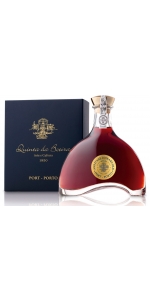


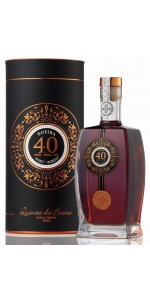
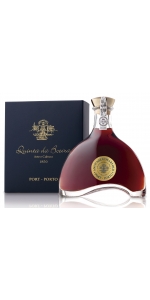


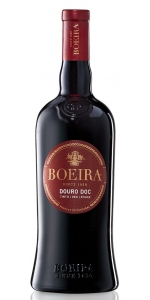

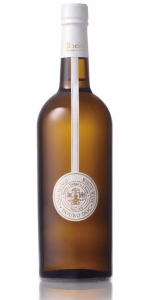
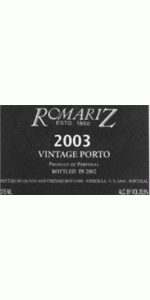

-150x300.jpg)
